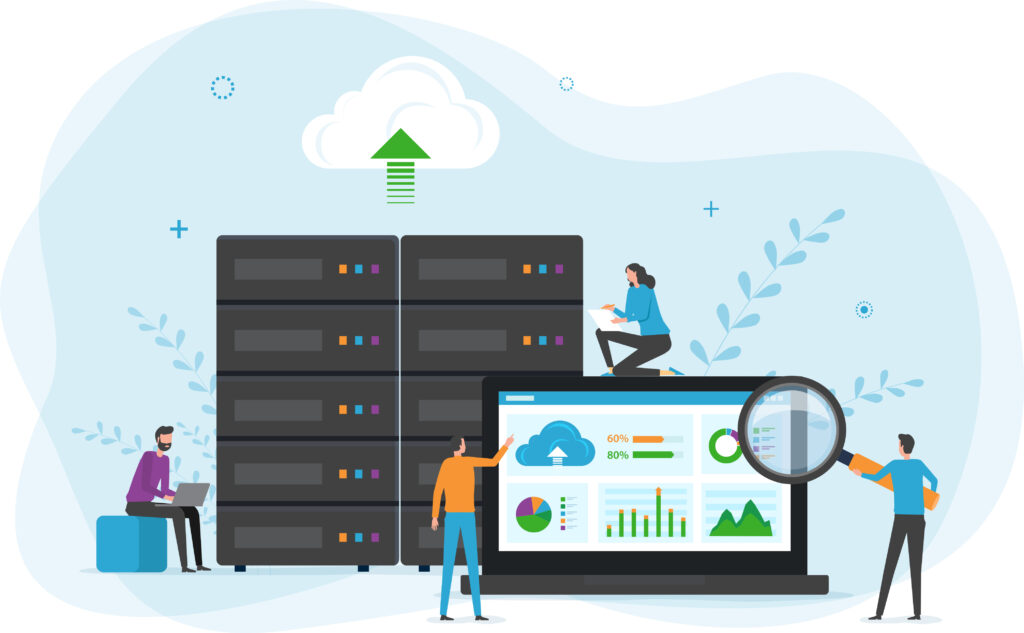As World Backup Day approaches on March 31st, it’s the perfect reminder that backups aren’t just important—they’re mission-critical for keeping data safe. Whether it’s safeguarding personal memories, protecting small businesses, or securing enterprise-scale systems, reliable backups are essential. In today’s cyber-threatened world, backups are the unsung heroes, ensuring both individuals and organizations can recover from ransomware attacks, accidental deletions, system failures, and unexpected disasters. And let’s face it—you appreciate a backup the most when you need it.
The Backup Battleground
In the last year, 94 percent of organizations hit by ransomware reported that attackers specifically tried to compromise their backups—and a staggering 99 percent in local and state government, media, and other sectors!¹
And bad actors are just getting smarter. Attackers are using artificial intelligence (AI) to supercharge their strategies—automating breaches, evading detection, and compromising backup systems faster than ever. Meanwhile, human error accounts for 29 percent of data loss,² from accidental deletions and misplaced files to the dreaded spilled coffee disaster. Add in corrupted software, system crashes, and natural disasters, and it’s clear: backups need more than just storage; they need to evolve.
Originally, backups were designed to recover from user error, natural disasters, and system failures. Now, they must also defend against a growing and relentless new threat—cybercriminals. Conventional backup tools weren’t built for this kind of fight, but technology has evolved to meet the challenge.
Fear Not—Backup to the Future Is Here!
As data risks multiply, backup strategies are leveling up to stay ahead.
By 2028, the number of enterprises using a common data backup and recovery solution across both on-premises and cloud workloads will grow from 20 percent to 75 percent. At the same time, generative AI (GenAI) will bring intelligence to 75 percent of these systems, up from fewer than five percent in 2024—making backup and recovery smarter, faster, and more adaptive than ever.³
New integrated and AI-driven innovations won’t just react to threats; they’ll anticipate and neutralize them, strengthening security while also forcing cybercriminals to up their game.
Modern Backups Save the Day (and the Data!)

Technology advancements—including AI, automation, analytics, and security innovations—are reshaping backup and recovery, making systems more efficient, proactive, and resilient. Here are some of the key capabilities modern solutions can offer:
- Smarter backup scheduling – Traditional backups follow rigid schedules that waste resources and miss critical updates. Advanced automation and analytics optimize backup timing by analyzing system activity and data patterns, reducing redundancy and minimizing system strain.
- Enhanced cyberattack defense – Cyberattacks increasingly target backups, making real-time monitoring essential. Threat detection tools, powered by AI and security analytics, identify ransomware, unauthorized access, and anomalies, automatically flagging malicious activity and strengthening defenses.
- Accelerated and reliable recovery – Preventing data loss is the priority, but when disruptions occur, rapid and complete restoration is essential. Modern backup solutions work with recovery systems to prioritize critical files, identify clean backups, and streamline the restoration process, leveraging AI, automation, and analytics to reduce downtime and minimize reinfection risks.
- Minimizing human error – Manual backup management can be inefficient and error-prone. Automated scheduling, execution, and monitoring improve reliability, streamline workflows, and ensure accurate, hands-off protection while reducing costly mistakes.
- Optimized storage and cost savings – Redundant and outdated backups waste valuable storage and inflate costs. Intelligent deduplication and analytics-based optimization remove unnecessary files, enhance storage management, and lower expenses while preserving data quality.
- Improved backup integrity – Restoring corrupted or compromised backups can be catastrophic. Advanced validation technologies, including AI-driven anomaly detection, scan for inconsistencies, malware, or unauthorized modifications, ensuring reliable recovery.
- Strengthened security and access control – Unauthorized modifications and access pose major risks to backup integrity. Zero-trust architectures, encryption, and AI-powered security analytics enforce strict access controls and detect anomalies, preventing breaches and fortifying long-term resilience.
As cyber threats grow more sophisticated, AI, automation, and other technologies will continue to drive autonomous recovery, real-time validation, and proactive security, turning backup strategies into a powerful advantage rather than just a safety net.
Celebrating World Backup Day—Today and Every Day
World Backup Day is a perfect reminder to reassess data management strategies and embrace new resilience technologies including AI-driven capabilities for stronger data protection. Whether you’re an enterprise managing petabytes of data or an individual protecting personal files, new solutions ensure backups are smarter, faster, and more secure than ever.
So jump in and take the official World Backup Day pledge with us: “I solemnly swear to backup my important documents and precious memories on March 31st. #WorldBackupDay.”
- Sophos, The impact of compromised backups on ransomware outcomes, March 2024.
- World Backup Day, Website, Accessed March 2025.
- Gartner, Magic Quadrant for Enterprise Backup and Recovery Software Solutions, August 2024.
